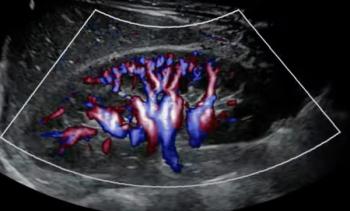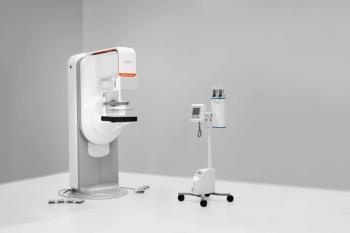Navigating the Unsteady Pace of Radiology
What are the key considerations to ensuring an optimal pace at your workstation?
I can be a luddite at times. Probably the best example was when cruise control became commonplace in cars. People loved it but I wasn’t one of them. I didn’t even need to give it a try to know, and that is saying something. At the time, I was regularly making multi-hour drives between hometown and residency, and long stints on highways were pretty much exactly where the gizmo saw its best use.
One could imagine my dislike came from mistrust, an unwillingness to relinquish control of my speeding vehicle. I might have initially said so if someone asked me, but I soon came to understand that it was because there is not a whole lot to do when behind the wheel. You steer, of course, but the vast majority of my mileage was more or less straight.
You can fiddle with the radio or find someone to talk to via cellphone, but monotony drastically increases if you remove the need to manipulate pedals. Heaven help me if self-driving cars ever become mainstream or mandated.
It is surely inefficient to do it my way, speeding up and slowing down rather than maintaining a steady pace. An omniscient individual would be able to show me how much money I have wasted over the years with excess fuel consumption and premature wear/tear on my brakes.
Meanwhile, I wholeheartedly embrace the notion of a steady, uniform pace when it comes to my time at the radiology workstation. The disconnect between my driving and working attitudes only occurred to me a little while ago and I didn’t have to think very long before figuring out where it came from: the beginning of my “per click” career.
Prior to that, in conventional salaried jobs in which productivity was given little attention, I didn’t care so much. If anything, I favored a variable pace of work. Just like with driving, it kept things a little more interesting as I went through my day. Interrupt me for contrast injections, diagnostic mammos, fluoro, etc, and I would feel a little less like I was a robotic individual on a factory assembly line.
Give me a reason to care about my RVU output, however, and my attitude changes in a hurry. The tortoise/hare fable teaches most young kids that steadiness wins the race, and here are any number of reasons why that is a good attitude to have in the real world. While slow sufficed in that children’s tale, I guarantee you that “fast and steady” would do even better. I used to quip that I would do just fine if you locked me in a closet with a stack of studies to read.
Many per-clickers, or even salaried rads with meaningful productivity bonuses, maintain an awareness of what their paces can be at work. It is a useful measure of one’s capability for instance in sizing up a prospective job. If you know the job is paying $X per RVU and you can reliably generate Y RVUs per hour, your appraisal of that gig is that you will be making about $(X times Y) per hour there. You can compare that against other per-click gigs and even salaried ones.
Dollars don’t even have to be a direct consideration. A lot of folks just take pride in their industriousness. Whatever proportion of the population that might be, it has got to be higher in the competitive fraction which made it into the medical field. If you know that your Y is higher than most of your colleagues (and it doesn’t come at the expense of quality), you are liable to hold your head up a little higher.
Work in different environments for long enough, and you can get more sophisticated. My average pace is Y, but I have worked in places with various levels of infrastructure efficiency and types of case mix, so I know that Y isn’t etched in stone for me. It might be Y +/- 20%.
There is one little fly in the pace figuring ointment. Even without the mammos, injections and such that used to interrupt my salaried work, there are plenty of factors that come along to make my Y fluctuate. They can still be radiological (techs need protocols or referrers have questions), but they might be logistical (servers crashing, internet outages). Being a work-from-home telerad doesn’t shield you from all of this.
Indeed, working from home introduces other variables you would never encounter in a hospital or imaging center. If you are the only one in the house during the day, you have to field all calls to your landline and in-person visits, wanted or otherwise. Solicitors are a small minority in this bunch. I have had to step away from my workstation to interact with electricians, assorted handymen, Verizon troubleshooters, you name it.
A lot of these things are only blips on the pace radar. It just takes a couple of minutes to bring the garbage out to the curb, for instance, or to let the pooches out into the backyard. On the other hand, when folks from Verizon or handymen are here, I take the time to make sure they understand what my issues are and make myself available to answer their questions, so they get things done properly.
Put a couple of these things into a typical workday, and simply resuming my average pace won’t get me back on track. It takes extra effort/efficiency (or a lucky string of easy cases) to make up for the lost time. I am thus aware that I am rarely actually doing my “average” pace of Y. Y is instead the outcome of doing well enough when I am undisturbed and “in the zone” that I can counterbalance my less productive intervals.
Perfectionist that I can be, I do have an awareness of my optimal pace. On days that I am doing particularly well and nothing is getting in my way, I will see that it is possible for me to do, say, 120 percent of Y. The pitfall of that awareness, if I am not keeping my perfectionism in check, is feeling disappointed or frustrated when I “only” do Y instead.
On the other hand, there is value in knowing my theoretical best on the off-chance that I encounter a career opportunity that beats it (for instance, a higher hourly-rate salary). Alternatively, if I happen to get new tools (an AI assistant perhaps) or a different case mix and notice that I am doing more than I ever thought possible, it might be a pleasant wake-up call.
On the other other hand, enough years in the per-click world have taught me not to pursue my theoretical best too aggressively. The closer one tries to make one’s daily Y adhere to one’s “best case” Y, the greater frequency one will feel stressed and/or disappointed by falling short.
Newsletter
Stay at the forefront of radiology with the Diagnostic Imaging newsletter, delivering the latest news, clinical insights, and imaging advancements for today’s radiologists.





























